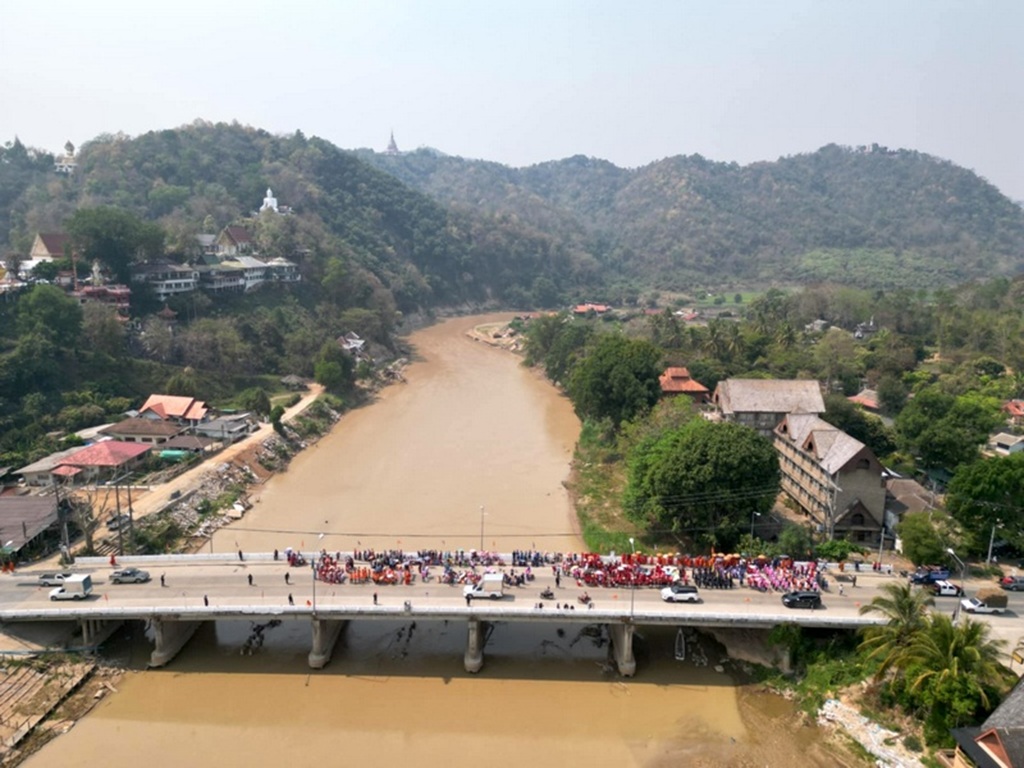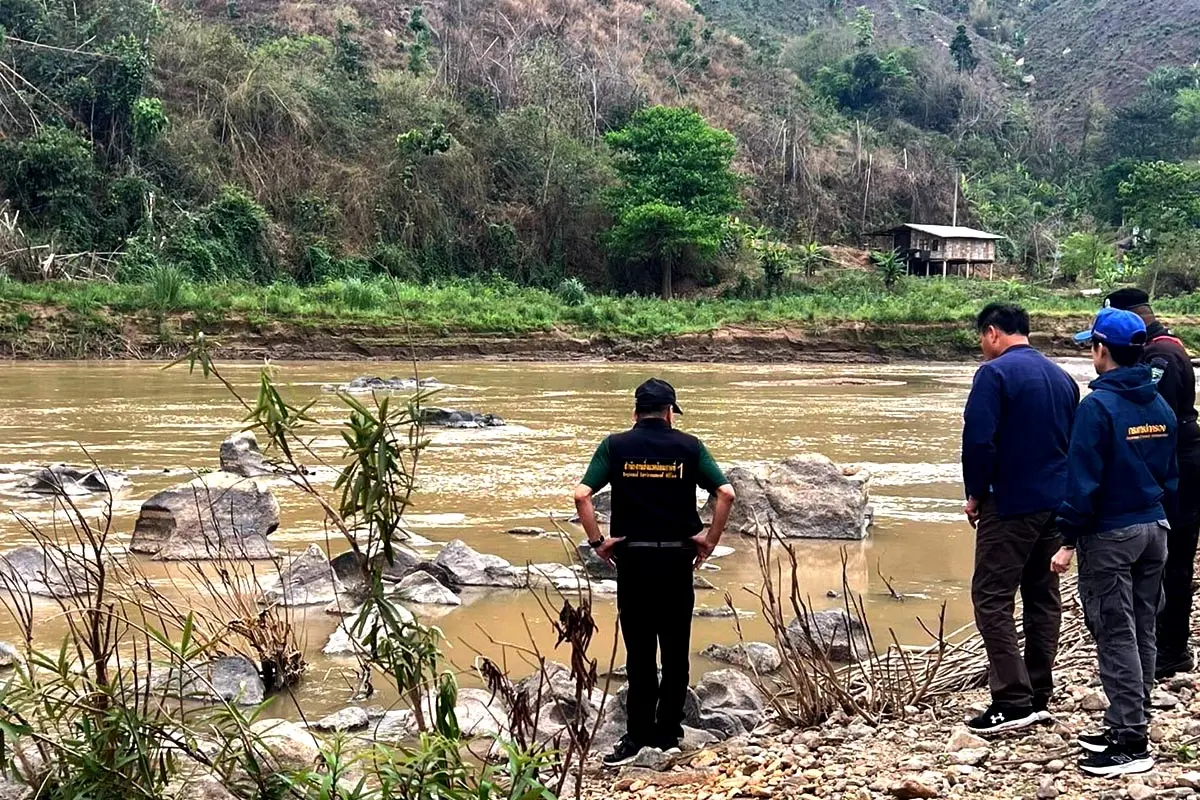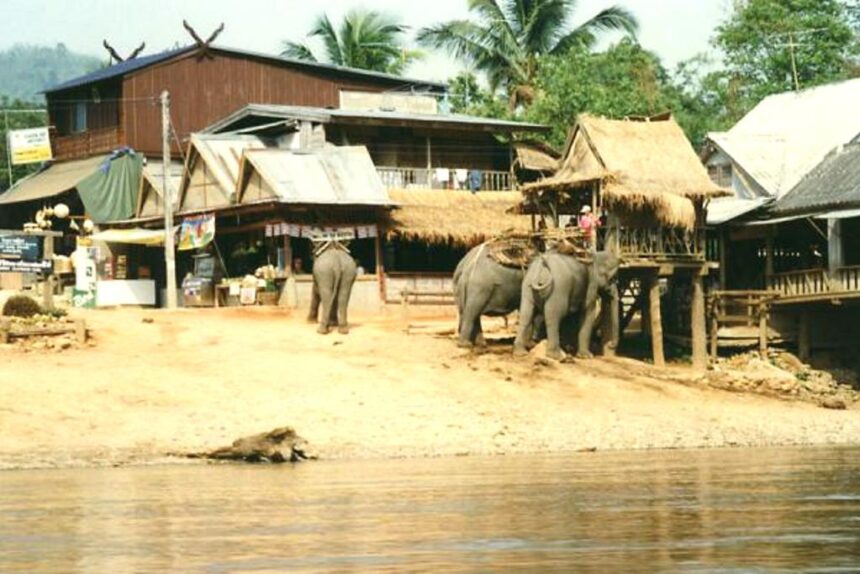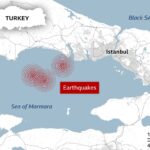Chiang Rai’s famous elephant camp is facing a rough time ever since arsenic was reported in the Kok River. Tourists are staying away, worried about health risks, and businesses near the river are seeing fewer visitors. The camp is struggling to feed the elephants.
Mr. Da, a mahout at the Karen Ruammit Elephant Camp in Mae Yao, Chiang Rai, shared that while the camp is still open to visitors, tourist numbers have dropped by over 80 per cent. At the start of last year, the area was busy with both international and Thai travellers.
But after the major floods in September 2024, Ruammit village and the riverside camps suffered heavy losses. Mr. Da explained that the floods swept debris into the river and changed its course. Some elephants stepped on nails and were hurt, so river crossings had to stop.
Later, when officials announced arsenic contamination in the Kok River, nobody dared to let the elephants go into the water. Now, tours only take place on dry land and up the nearby hills.
“Most mahouts have taken their elephants back into the forest because there are so few tourists,” Mr. Da said. “We used to earn 1,500–2,000 baht per day, but now some days we get nothing. Many of us have had to pause our work. I’ve turned to farming for now. Some people don’t want to care for elephants anymore.”

Chiang Rai Communities Unite
Taweesak Maneewan from the Mekong Rainbow Foundation in Chiang Rai said that several community groups in Chiang Rai are joining forces to deal with the Kok River’s new status as part of a national park. When the news of arsenic in the river broke, locals were told not to enter the water.
This came up at a network meeting on April 21, as many villagers lacked information and were unsure what to do next. People want clear updates from authorities and advice on how to stay safe, plus a long-term fix from the government.
“We had the flooding before, now there’s arsenic in the river. But we barely know anything because we get so little information from the government,” Taweesak said. “People are scared. We don’t know if tap water or groundwater near the river is safe.
Can we still eat local vegetables like fiddlehead ferns? What about crops watered from the river and sold at markets—are they safe? We need proper checks, including tests on river sediment, because we don’t know if chemicals remain and if fish from the river are still safe to eat.”
Boonsri Panasawangwong from the Chiang Rai Community Rights Network said that banning access to the Kok River has cut people off from their way of life. Villagers depend on the river for drinking, cooking, and food. Local people can’t solve this alone.
They need guidance on what to do and health checks, because some children have shown skin problems after being in the water, though it’s not clear if the issues are linked to arsenic.
Boonsri said it’s unclear if the Chiang Rai governor’s order to use health centres and local administrative groups as reporting points for suspected arsenic cases has reached the villages. So far, nobody has come forward, and people don’t know what steps to take except to avoid the river.

Fears of Chemical Residue
Pirimu Na Kiri from the Highland Development Foundation, who lives on the right bank of the Kok River in Huai Chomphu, said more than 20 riverside communities rely on the river for day-to-day living.
Kids usually swim and play there after school, but now worries about chemical risks are growing. Many locals catch fish and pick vegetables along the river, but fear chemical residues could harm them in the long run.
“When the rainy season changed to the dry season, the river stayed cloudy, which looked odd. We wondered if something upstream was wrong.
After officials told us to avoid the river, most people stopped going in, but some still use the water for farming because there has been little direct information from the government. Farmers on both sides of the river need updates so they know whether it’s safe to keep using river water or if they should stop entirely,” Pirimu said.
He added that regular loudspeaker announcements in the villages are very important for getting the word out, but the information needs to reach everyone. Right now, only a few people know what’s happening, and most continue as normal, noticing only that the water is murky without knowing about the arsenic.
Nattarat Porndetanan, the Chiang Rai Fisheries Officer, shared that last week, their team collected fish samples from the Kok River in Muang district to test for heavy metals at the Environment and Pollution Control Office 1 in Chiang Mai. Results are expected next week.
There have also been reports of unusual fish conditions in the river that might be linked to contamination, which are still under review.
Meanwhile, Awee Pakmat, the office’s director, assigned staff to collect surface water and sediment samples from nine sites in Chiang Saen, Mae Chan, and Muang between April 21–22. The findings will be reported soon.
Related News:
Chiang Rai Residents Demand Action Over Arsenic Contamination in Rivers

Geoff Thomas is an award winning journalist known for his sharp insights and no-nonsense reporting style. Over the years he has worked for Reuters and the Canadian Press covering everything from political scandals to human interest stories. He brings a clear and direct approach to his work.














